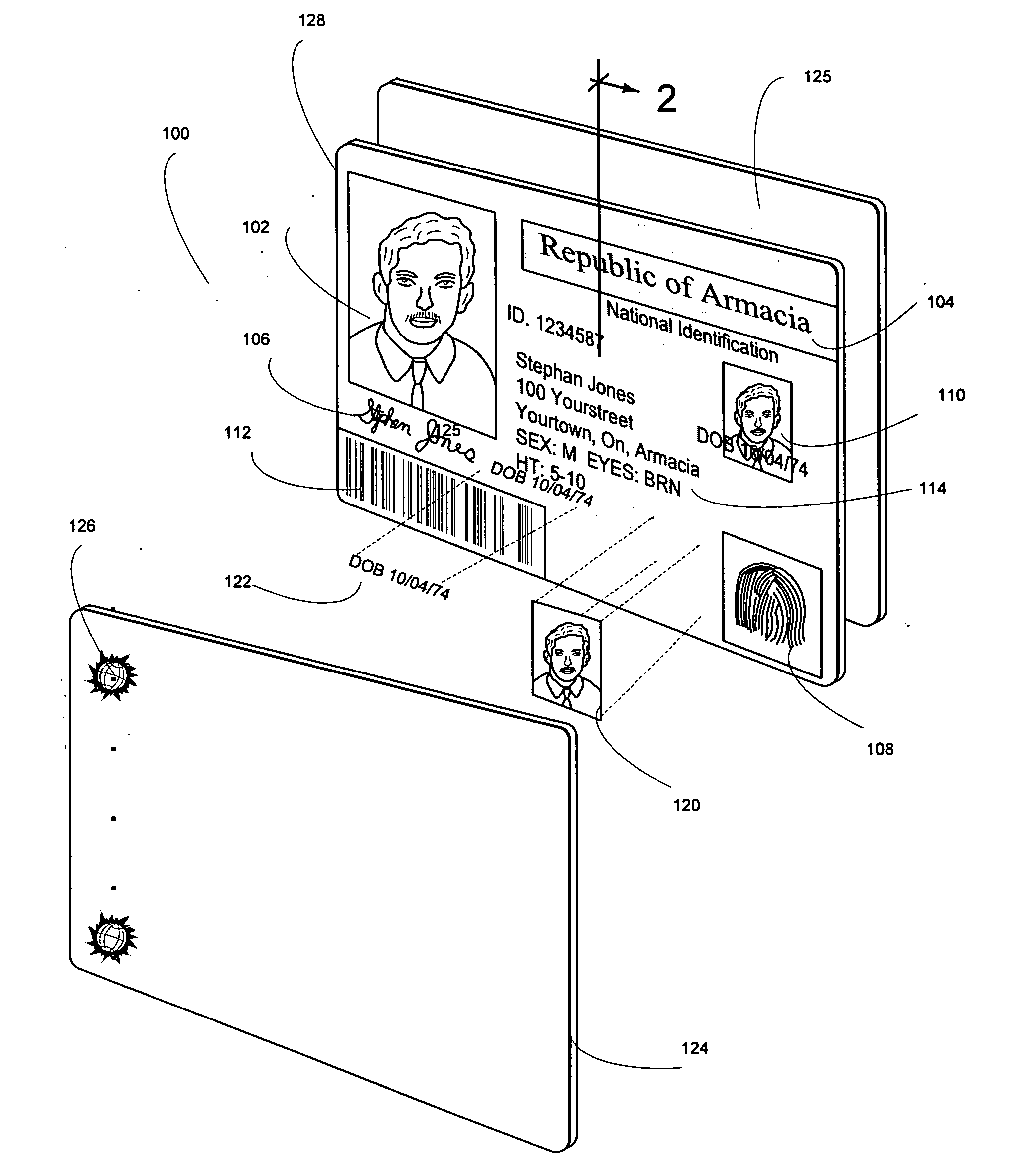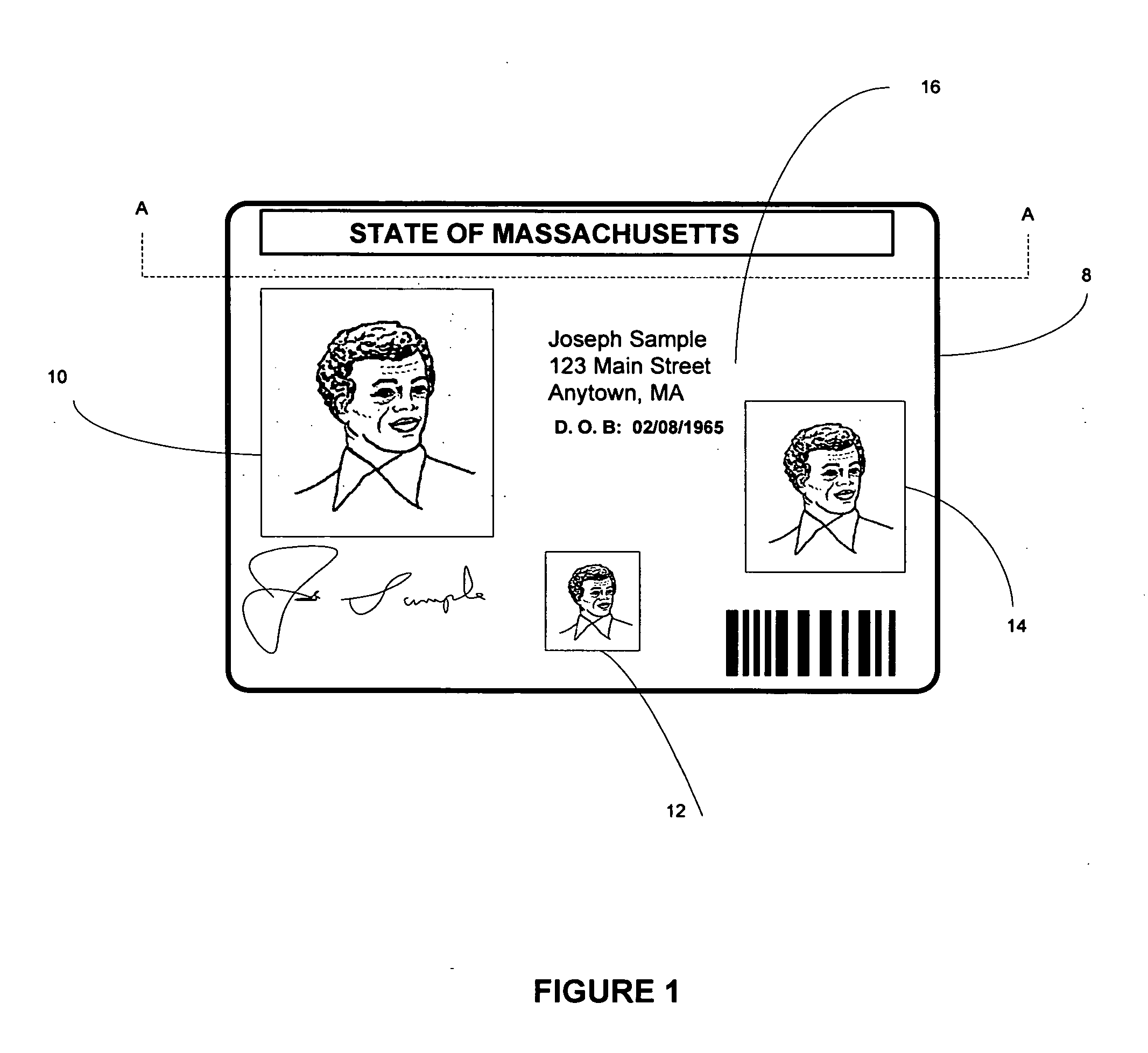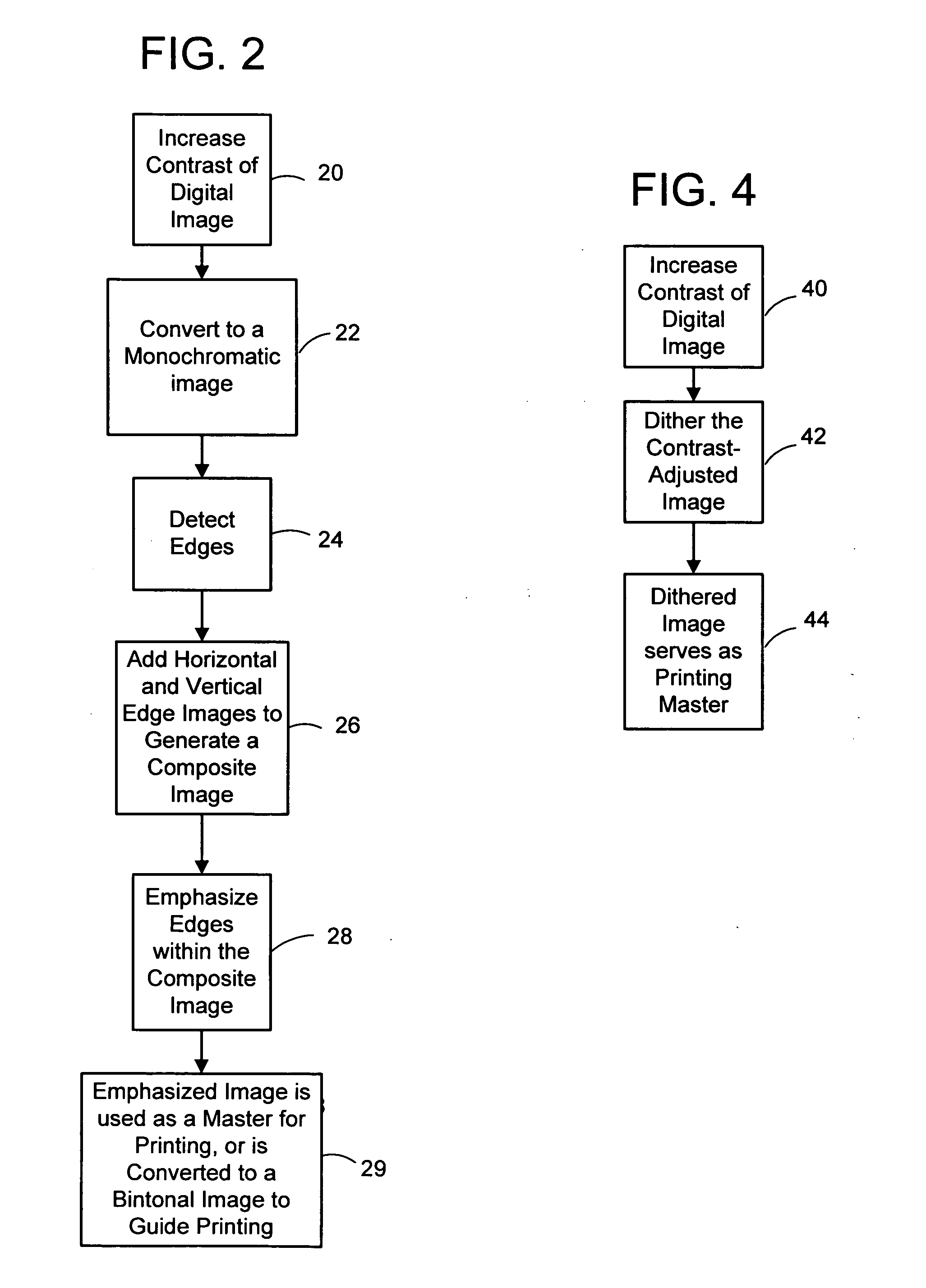Optically variable personalized indicia for identification documents
a technology of identification documents and indicia, which is applied in the field of identification and security documents, can solve the problems of difficult to print covert images such as driver's license portraits, difficulty in manufacturing without the requisite know-how, equipment and materials, and increased costs of dye diffusion methods
- Summary
- Abstract
- Description
- Claims
- Application Information
AI Technical Summary
Problems solved by technology
Method used
Image
Examples
first embodiment
[0151] In one embodiment, we print the optically variable image of variable data onto an area of the identification document that contains little or no other indicia, such that when the identification document is viewed at a first angle, the optically variable image is not visible, but when the document is viewed at a second angle, it becomes visible. For example, FIGS. 6A-6B are views of an identification document 100 in accordance with one embodiment of the invention, shown at first and second viewing angles, respectively. Referring to FIG. 6A, the identification document 100 includes a image of the bearer 102, fixed information 104 (e.g., state of issuance), bearer signature 106, a fingerprint 108, a visible “ghost” image 110, bar code 112, and security feature 126. In this example, the security feature 126 can be any known type of security feature (e.g., KINEGRAM, hologram, optically variable device (OVD), UV or IR indicia, etc.). The security feature 126 can be a repeating patt...
fourth embodiment
[0191] An illustrative example embodiment of an identification document 100 in which the optically variable indicia can completely or partially overlay a non-visible indicia is shown in FIG. 11, which is an exploded isometric view of an identification document in accordance with the invention, and FIG. 12 is a cross-sectional view of the identification document of FIG. 11. Note that in FIG. 11, all indicia are shown as “visible” for purposes of illustrating how the identification document 100 is constructed.
[0192] In FIGS. 11 and 12, it can be seen that OVDD 136A is aligned with and overlays a corresponding covert indicia 140B (in this example, it is a UV indicia), which itself is aligned with and overlays a ghost image 110. Note that in the cross sectional view of FIG. 12, the ghost image 110 is somewhat diffused into the image receiving layer 119 In addition, it should be understood that illustrating OVDD 136A as overlaying the covert indicia 140B in FIGS. 11 and 12 is not intende...
PUM
 Login to View More
Login to View More Abstract
Description
Claims
Application Information
 Login to View More
Login to View More - R&D
- Intellectual Property
- Life Sciences
- Materials
- Tech Scout
- Unparalleled Data Quality
- Higher Quality Content
- 60% Fewer Hallucinations
Browse by: Latest US Patents, China's latest patents, Technical Efficacy Thesaurus, Application Domain, Technology Topic, Popular Technical Reports.
© 2025 PatSnap. All rights reserved.Legal|Privacy policy|Modern Slavery Act Transparency Statement|Sitemap|About US| Contact US: help@patsnap.com



